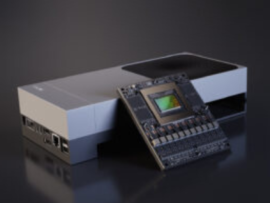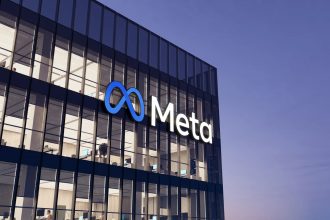
Image: Nvidia
The latest Nvidia venture to benefit from the Blackwell chip is Jetson AGX Thor, the newest iteration of the company’s “robot brains.” Intended to make physical AI smarter for tasks like autonomous driving, factory robots, and humanoid machines, Jetson AGX Thor is now available in three form factors. A developer kit with specialized DRIVE OS for autonomous vehicles is expected to launch in September.
Jetson AGX Thor is the 2,070 teraflop heart of advanced robots
The Jetson AGX Thor succeeds the 2022 Jetson Orin Nvidia robotics kit. It enables robotics and edge applications, including AI that monitors video streams, or robots picking up objects in unstructured environments.
Nvidia said Thor offers 7.5 times more AI compute, 3.1 times more CPU performance, and double the memory compared to Orin.
The Jetson AGX Thor line includes four products:
- The Jetson AGX Thor developer kit is available now from Nvidia retail partners for $3,499.
- The production model Thor T5000 is available now for $2,999.
- The Thor T4000, a pared-down model for Orin customers seeking to upgrade to Thor at a similar price point, is available now for $1,999.
- The DRIVE AGX Thor developer kit, specifically for automated vehicle applications, will be available in September. Pricing is available upon request from retailers.
At up to 2,070 teraflops of AI compute, the Thor T5000 is one of Nvidia’s most powerful edge computing platforms. It runs on a 14-core Neoverse ARM CPU, providing 128 GB LP5 memory at 273 GB/s, and consumes 40 to 130 watts of power. Arm contributed Neoverse V3AE CPUs, which provide deterministic performance, ISO 26262 functional safety, and 2,000 teraflops of FP4 performance in support of real-time applications.
Many of the platforms used in Thor — such as the NVIDIA DriveOS 7.0.3 for DRIVE AGX Thor and Nvidia’s Isaac (robotics), Metropolis (visual AI), and Holoscan (sensor processing) platforms — run on Arm compute architecture.
“Arm Neoverse V3AE is opening the door to scalable, safety-capable, and energy-efficient compute, ensuring fleets of vehicles and factory robots can run advanced AI workloads sustainably at the edge,” said Dipti Vachani, Arm senior vice president and general manager of the automotive line of business, in a press release.
Supports generative AI, multi-agent workloads, and robotics frameworks
The Jetson AGX Thor platform also includes multi-instance GPU support, the equivalent of simultaneously running two programs on two different GPUs. That 128 GB of memory can even run many generative AI models at the same time, which might be good for projects using a mixture-of-experts method to combine AI agents.
It supports cutting-edge AI models such as those from OpenAI, Google, DeepSeek, and more. It’s compatible with Hugging Face and Pytorch frameworks, as well as other frameworks and tools.
“Years ago, there was a big disconnect between computer vision and robotics because computer vision workloads were too slow for real-time decision-making — but now, models and computing have gotten fast enough so robots can handle much more nuanced tasks,” said Sebastian Scherer, an associate research professor at Carnegie Mellon’s Robotics Institute who uses Nvidia Jetson to run robots that can triage medical patients or carry out search and rescue operations.
Nvidia is trying to emphasize robotics and automotive computing
Nvidia has been expanding into robotics, particularly humanoid robotics and autonomous vehicles, as part of its strategy to diversify away from generative AI and to continue dominating the hardware and infrastructure space. Robotics currently accounts for only about 1% of the company’s revenue.
“We do not build robots at Nvidia, but we work with every company on the planet that builds robots,” said Deepu Talla, vice president of robotics and edge AI at Nvidia, in a press briefing on Friday.
Volvo, Aurora, Gatik, Tensor, and others have already adopted the DRIVE AGX Thor developer kit for autonomous vehicles. Boston Dynamics will use Jetson AGX Thor to enable compute on their Atlas robot — a capability previously achieved at the server level.
The US government may expand the scope of the CHIPS Act to include minerals critical to semiconductors, redirecting $2 billion.






